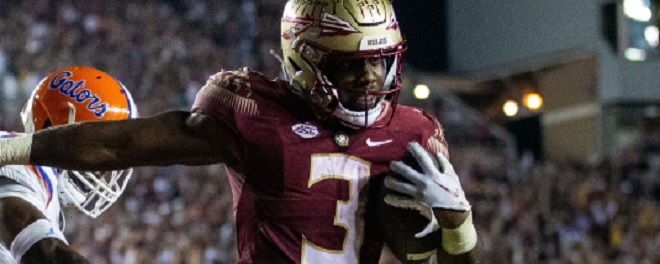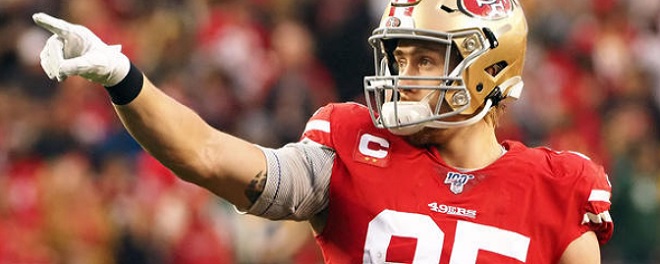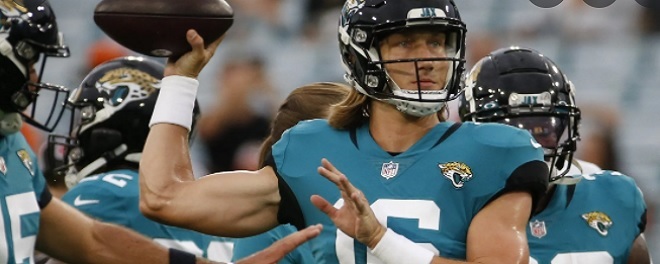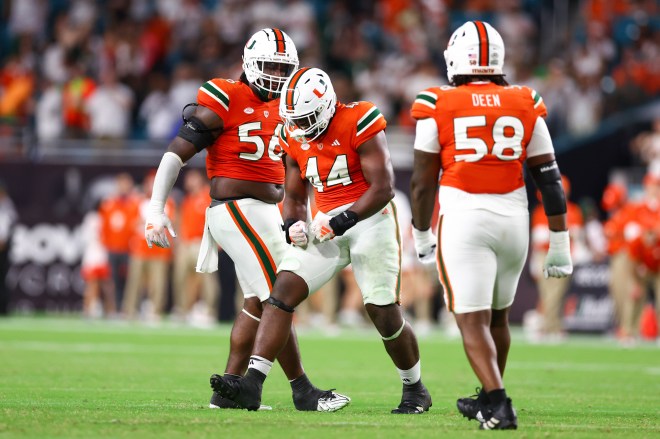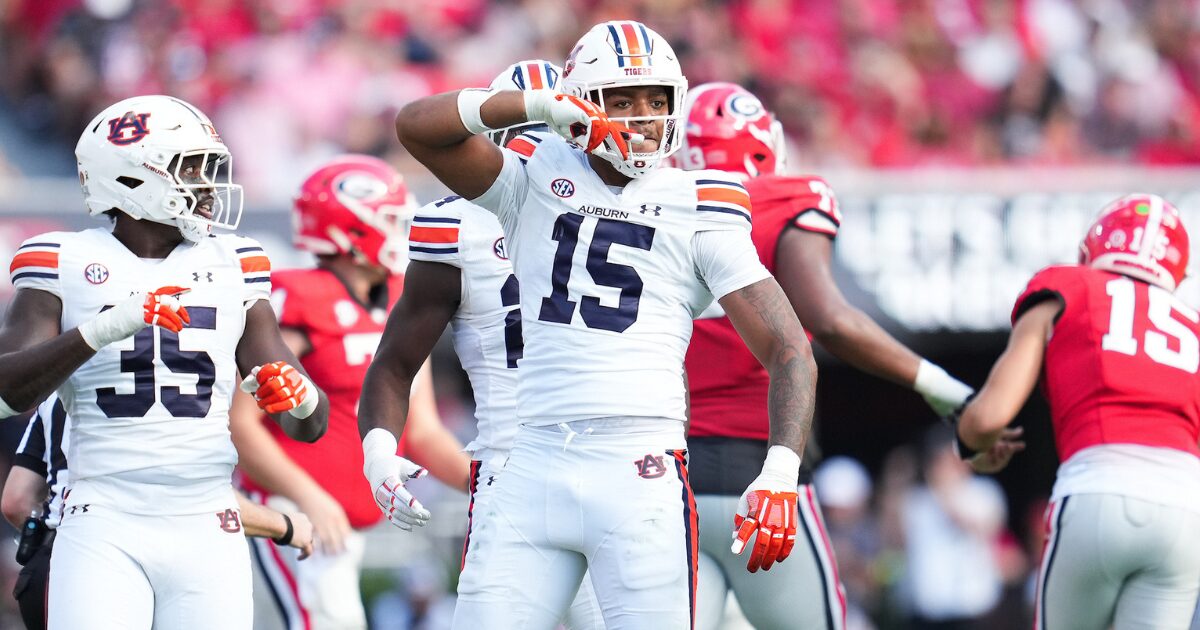Running Back Class
Early-round talent: DMid-round: A-
Late-round: B
Overall grade: C
Merging the 2023 and 2024 prospects
Bijan RobinsonJahmyr Gibbs
Zach Charbonnet
Blake Corum
Kendre Miller
Jonathon Brooks
Trey Benson
Tyjae Spears
De’Von Achane
Tank Bigsby
Ray Davis
Audric Estime
Bucky Irving
Braelon Allen
Will Shipley
Roschon Johnson
Just to be clear, this article and series is all my opinion based off my own study and information I’ve gotten from general managers, directors of college scouting, national scouts, area scouts and NFL coaches. They all know way more than I do.
The 2023 class was a good year for running backs, and I gave it an A- overall, with an A grade for early-round talent. The 2024 class is not as a strong at the top, but it does have a good amount of depth in terms of quality prospects for the mid-rounds and Day 3 of the 2024 NFL Draft.
If you were to merge the two classes together, Bijan Robinson and Jahmyr Gibbs would be far and away the top-two prospects. Blake Corum is a good second-rounder, but nowhere to close to those two backs who went in the top half of the first round last April. Corum would fall between Zach Charbonnet and Kendre Miller. Audric Estime, Bucky Irving, Braelon Allen, Dillion Johnson and Will Shipley are third-/fourth-rounders similar to Tank Bigsby and Roschon Johnson.
Safest Pick: Blake Corum, Michigan 
Previous Picks2023: Bijan Robinson
2022: Breece Hall
2021: Najee Harris
2020: D’Andre Swift
2019: Josh Jacobs
2018: Saquon Barkley
2017: Leonard Fournette
2016: Ezekiel Elliott
2015: Melvin Gordon
2014: Carlos Hyde
2013: Eddie Lacy
Corum is the safest back in the 2024 NFL Draft class to turn into a quality pro starter. Possessing a well-rounded skill set to go along with natural ability, Corum should become an effective three-down starter in the NFL. He has good power, quickness, and natural running ability.
Biggest Bust Potential: Audric Estime, Notre Dame 
Previous Picks2023: Sean Tucker
2022: Kyren Williams
2021: Chuba Hubbard
2020: A.J. Dillon
2019: David Montgomery
2018: Rashaad Penny
2017: Wayne Gallman
2016: Kenneth Dixon
2015: Mike Davis
2014: Lache Seastrunk
2013: Montee Ball
This was a tough choice because none of these running backs look like they are true busts, but also none will probably be first-round picks. Estime stood out some because he lacks speed to the hole and requires a very good offensive line to be effective. Hence, he looks like the most riskiest of these backs.
Running Back Rankings by Attributes
Natural Running Ability:
NFL prototype: Johnathan Taylor, Colts
- Blake Corum
- Jonathon Brooks
- Trey Benson
- Ray Davis
- Bucky Irving
- Will Shipley
- Braelon Allen
- Audric Estime
Recap: There are still a number of coaches in the NFL who want an old-school approach of a running-based offense. Additionally, a lot of passing-led offenses want a running back who can wear down defenses in the second half.
There is a lot to like about Corum, who is a natural runner with instincts, feel and vision. He can be a tough downhill back and really imposes his will on defenses. Corum is a hard-charging runner with a strong build who will plow through tackles to pick up yards after contact. Utilizing excellent contact balance and strength, Corum makes it hard to get him to the ground. Instead, he will push through tackle attempts to rack up a lot of extra yardage. Beyond the power to push through defenders, Corum has natural pad level with knee bend, as well as body lean to run with leverage.
Brooks demonstrates very good running fundamentals, and his natural running instincts are advanced. He displays phenomenal patience to let holes develop. On top of being willing to wait, Brooks has the vision to see lanes about to come open, and he then uses good body lean to run behind his pads. In the open field, Brooks displays a second gear to break off long runs, and once he decides to go downhill, he has a burst to hit the hole quickly before it closes up. Brooks’ burst is impressive for a big back, as he has some serious explosion in the open field.
As a runner, Benson is a load. He is a true power back who can run over defenders and will constanly plow through tackles. Benson is not just a power back, as he has a burst to hit the hole and the acceleration to get downfield. Benson displays good contact balance and patience that allow him to flow to the line before darting downfield. Benson will power through arm tackles, and his legs don’t go dead on contact. With his burst and strength to run through contact, Benson is a dangerous threat to break runs into the second level.
Davis is a downhill physical force as a runner. He is a true North-South power back who runs over defenders and constantly picks up yards after contact. With his power and strength, Davis is dangerous in short-yardage and goal-line situations because he is a very physical runner who shows no fear to hit the hole with authority. Davis does a fantastic job of keeping his legs churning after contact. He is a decisive runner who charges downfield and is not one to dance in the backfield. Davis displays zero hesitation to stick his nose into a scrum and power through the defense to generate positive yardage. His power allows him to finish runs well, and he will consistently drag tacklers behind him.
Irving is a quick back who is real threat to rip off a chunk gain anytime he touches the ball. He shows a burst and accelerates through the hole with another gear to break into the secondary. In the open field, Irving has moves to dodge tacklers and some change-of-direction skills.
There is a lot to like about Shipley as a runner. He possesses a nice combination of traits like vision, elusiveness, and quick feet. The elusiveness can be seen in how he cuts around tacklers, spins away, and dodges tacklers with shifty moves. Shipley’s short, compact build adds to the elusiveness because defenders have a hard time grabbing a hold of him. He displays natural vision to find holes about to open, to see cut-back lanes, and to read the flow of defenses behind his blockers. Shipley’s quick feet allow him to cut on a dime, plus provide him with excellent balance. He is not the biggest of backs, so running through contact and breaking tackles could be challenges for him at the next level.
Allen is a physical downhill runner who can power through tackles and is really tough for defenders to get on the ground. He possesses a strong, thick build that includes the lower body strength to run through defenders and pick up yards after contact. With good balance and patience, Allen can make one cut and then get North-South, running downhill and charging into the secondary. In the NFL, Allen should be an asset in short-yardage and goal-line situations.
Estime is a hard-charging running back who could turn into force in the NFL if he has a good offensive line that can give him time to hit the hole. Estime lacks some first-step quickness, but when he gets past the line, he is a load. Estime is a physical presence with serious power from a strong build. He uses that strength to pick up yards after contact, as he will fight through tacklers and he is capable of running through defenders to pick up more yardage. Estime has good contact balance, a strong stiff arm, and a powerful build that lets him run over blockers at the second level.
Pass Receiving:
NFL prototype: Christian McCaffrey, 49ers
- Bucky Irving
- Will Shipley
- Ray Davis
- Blake Corum
- Jonathon Brooks
- Trey Benson
- Audric Estime
- Braelon Allen
Recap: The passing-driven NFL has many offensive coordinators emphasizing their running backs’ ability to help the aerial offense over their rushing talents. Coaches want backs who have good hands, run good routes and can rack up yards as outlet receivers. This group is very good overall, as the majority of them are good receivers out of the backfield. None of them, however, is a Christian McCaffrey-type back who could legitimately line up as a slot receiver.
Irving is a valuable contributor tothe passing game, as clearly seen from his 87 receptions over the past two seasons. He is an excellent route-runner out of the backfield, and his shiftiness is very difficult to defend in the open field. His cutting ability and sudden bursts create separation from linebackers, along with helping him gain yards after the catch. Vaughn is dangerous in space once he gets the ball in his hands because he weaves through defenders with his elusiveness. As a pro, he should be a real weapon for the passing game on wheel routes, screens, and check downs.
Shipley is well-suited for the passing-driven NFL because he is a natural receiving back. He runs good routes out of the backfield and has soft hands. There is no doubt that Shiley can be a weapon as a receiver. With soft hands, Shipley is natural at catching the ball. He is elusive in the open field and can rip off yards in chunks. Shipley is too quick and shifty for linebackers or safeties to cover in man, so he provides an excellent mismatch and will be a third-down receiving problem in the NFL.
As a receiver, Davis does a nice job for a power back. He showed the ability to contribute as a receiver in 2023, putting up quality production through route-running and reliable hands. Like all college backs, Davis will need development with blitz protection, but he is a willing blocker who has the potential to be a good contributor in that phase.
Corum has more ability for the passing game than was seen in a lot of college, where he did not see a lot of work in that phase. His hands and route-running look to be solid, and he has the upside to improve.
In the passing game, Brooks was solid in 2023, displaying a nice outlet ability. He did well on screens and showed some nice, soft hands. As a receiver, Benson will need some work for the NFL because the Florida State offense did not throw him the ball much. He flashed the ability to contribute as a receiver.
Estime has passing-game potential, but he was not used in that role very much in college. He did a nice job of catching the ball in his limited opportunities. In the passing game, Allen could contribute some on swing passes to the flat and screens. He won’t me a dynamic mismatch weapon as a receiver, but he could be an option at times.
Pass Blocking:
NFL prototype: Ezekiel Elliott, Free Agent
- Blake Corum
- Ray Davis
- Will Shipley
- Trey Benson
- Jonathon Brooks
- Braelon Allen
- Audric Estime
- Bucky Irving
Recap: This is huge for offensive coordinators. If a running back can’t pass protect, he is going to have a hard time seeing the field in the NFL. If the defenses know that a running back isn’t trusted to protect the quarterback, it is an immediate tip about what the play is going to be. Coaches want multiple backs with pass-protection skills. The importance of blitz pickup and pass blocking is vital for playing time for a running back.
All of these backs have the potential to contribute as blockers. They all will need development for knowing where to be, who to pick up, and being assignment sound in their blitz protection diagnosis. Corum is the best at pass protection. He squares up blitzers well and does a nice job of diagnosis at this point. Davis, Shipley and Benson are plus protectors entering the next level. Brooks, Allen, Estime and Irving have potential.
Yards After Contact:
NFL prototype: Derrick Henry, Ravens
- Braelon Allen
- Audric Estime
- Jonathon Brooks
- Trey Benson
- Ray Davis
- Blake Corum
- Bucky Irving
- Will Shipley
Recap: For running backs to be consistently successful in the NFL, they have to have the ability to get yards after contact. Breaking tackles is critical to moving the chains and setting up good down-and-distance situations. This group offers an excellent set of prospects who can pick up yards after contact.
Allen, Estime, Brooks and Benson will flat-out run over tacklers and power through them with violence. Davis and Corum are physical runners who break a lot of tackles and are dangerous to pick up yards after contact. Irving and Shipley are able to pick up some yards after contact as well.
Zone-Blocking Runner:
NFL prototype: Saquon Barkley, Eagles
- Jonathon Brooks
- Trey Benson
- Blake Corum
- Ray Davis
- Braelon Allen
- Audric Estime
- Bucky Irving
- Will Shipley
Recap: The zone-blocking scheme calls for backs to have quickness and physicality. They need the ability to follow the moving wall, use vision and anticipation to see the hole opening and then make one cut to run downhill. It is a different type of running compared to a set, designed play. There isn’t a running back in this group who would be a bad fit for a zone scheme.
There is a lot to like about Brooks, Benson, Corum, Davis, Allen and Estime in zone-blocking systems. They all are hard-charging downhill backs who have a quick first-step to hit the hole before it closes and another gear to get to the secondary. Irving and Shipley can run some zone plays, and both have the burst to dart downfield. They could be better in a man schemes given their sizes, but they have enough ability to execute some plays in zone schemes.
Power-Man Runner:
NFL prototype: Alvin Kamara, Saints
- Blake Corum
- Jonathon Brooks
- Bucky Irving
- Will Shipley
- Ray Davis
- Trey Benson
- Braelon Allen
- Audric Estime
Recap: Corum, Brooks, Irving and Shipley are good fits for power-man schemes with their quick feet, speed, shiftiness, and ability to create on their own. Davis and Benson have enough elusiveness where they could play in a man scheme. Allen and Estime are better fits for a zone scheme.
NFL Picks - Jan. 1
2026 NFL Mock Draft - Dec. 31
NFL Power Rankings - Dec. 29
Fantasy Football Rankings - Sept. 1

